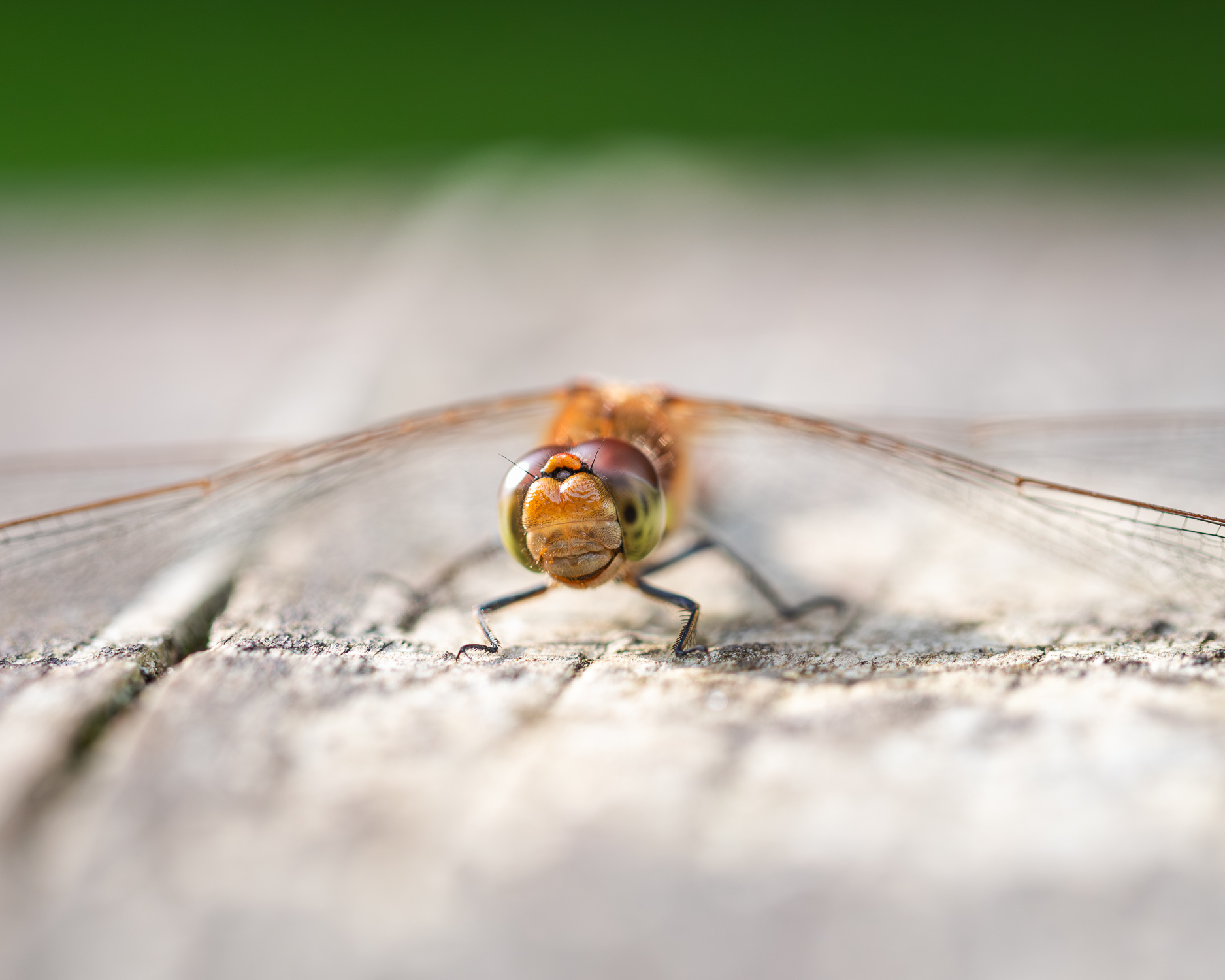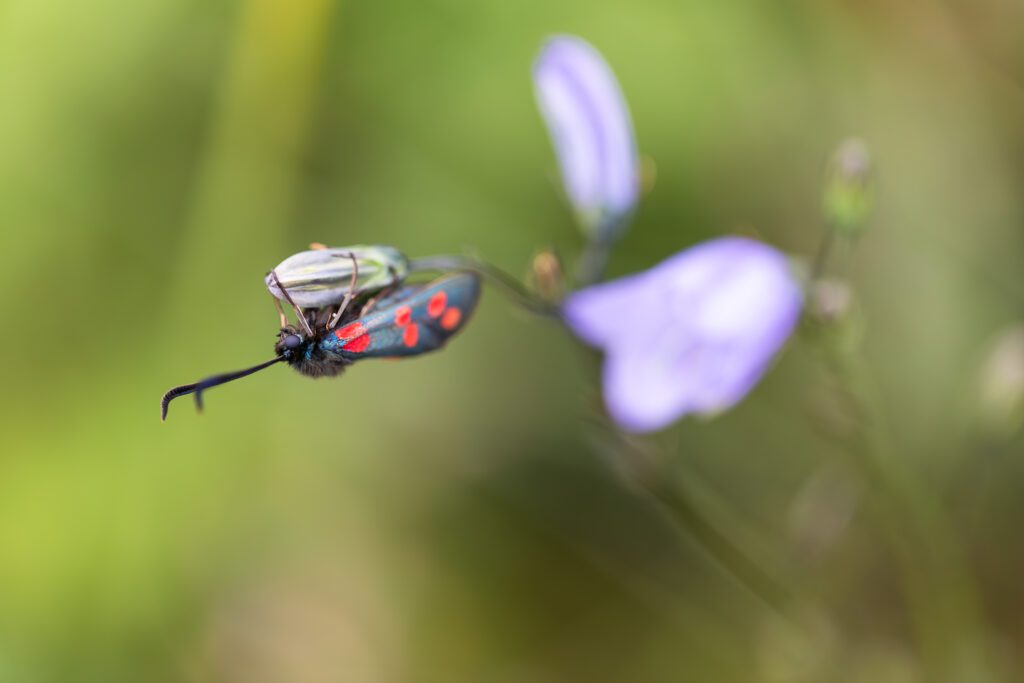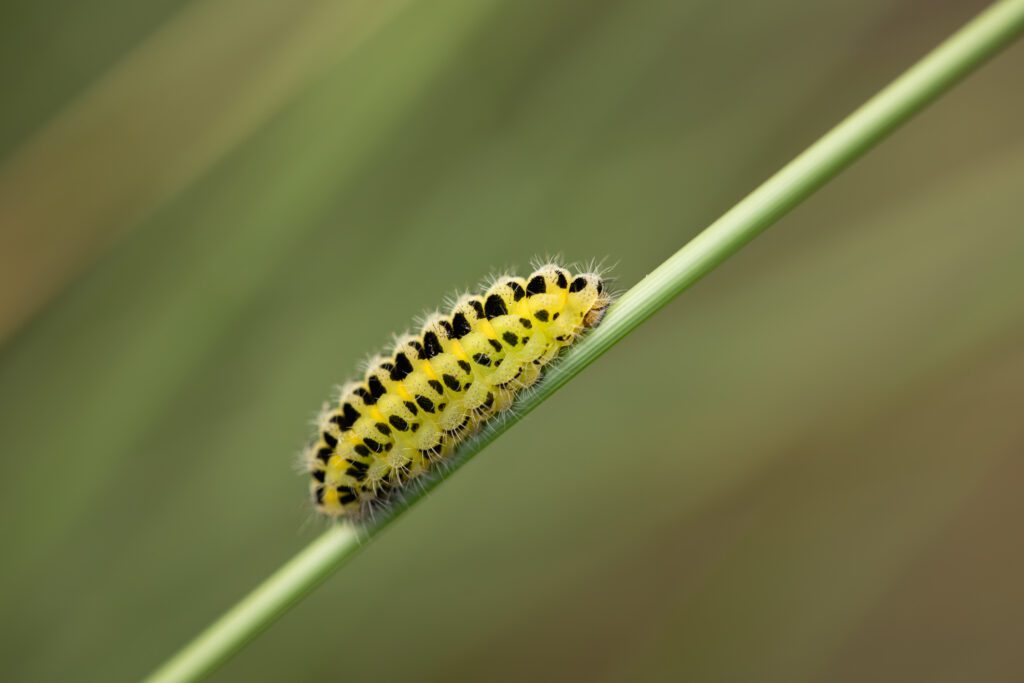I haven’t been able to enjoy macro photography as much as I would have liked to this year. In my previous blog post, I touched on the fact that it has been a worrying year for insect life. Since then, this has unfortunately been officially confirmed by Butterfly Conservation, who recently declared a national “Butterfly Emergency” after a significant decline in butterfly numbers. Given butterflies and moths are indicators of the health of natural environments, this is a worrying time for all insect life.
For more information on the “Butterfly Emergency”, click here to read the latest announcement by the Butterfly Conservation.
Despite my best efforts, I have struggled with macro photography this year. However, over the past week or so, the opportunity I had waited for finally arrived. Dragonflies had emerged and in surprisingly good numbers! Keen to make the most of this, I visited a couple of beautiful local nature reserves whilst enjoying a rare spell of high pressure and glorious sunshine.
The Macro World Within Formby’s Protected Dunes
The dunes at the National Trust’s Formby Beach are stunning. What might surprise you is that they are a haven for wildlife. Some of the UK’s most protected wildlife can be found within the iconic dunes of Formby Beach. What a location and a perfect spot for honing my macro photography.
Finding the Unfindable
Before I could attempt macro photography amongst the dunes, I first had to discover what was around and when. This meant visiting at different times of day to build up a picture of what I saw and where. I’ll be honest: this was more difficult than I imagined. To my untrained eye, finding insects wasn’t easy. However, the more time and effort I put in, the more I began to notice. Eventually, I was confident that early morning was the best time to visit as the wildlife was generally less active. This might sound counter-intuitive, but it’s much easier to photograph insects and wildlife whilst they’re less active during the early hours.
There is no easy way to find subjects during the early hours. Most of the wildlife populating the dunes are masters of camouflage. I found the best method of locating wildlife to photograph was to pick a small area within the dunes and search with a fine-tooth comb. The more I looked, the more I saw. Eventually, I reached the point where I was finding life here, there, and everywhere!
Early Morning Dew, The Macro Photography Dream
I now had a better understanding of where to look and when. It was time to get the camera out and head back to the dunes to practice some macro photography.
Opportunity Arrives as the Weather Improves
During the middle of September, a window of high pressure brought Indian summer conditions to the UK. This was perfect for macro photography, providing the foundations for high-humidity mornings. High humidity and low wind speeds allow dew to form as water vapour in the air condenses on cooler surfaces. Dew can form on grasses, leaves, and even on insects themselves.
The weather forecast looked great for the whole week. Relatively low wind speeds, high humidity and promising dew points. The biggest hurdle now was dragging myself out of bed at 4 AM to get myself situated at Formby Beach before sunrise.
Seizing Opportunity
At the first opportunity, I resisted the urge to ignore my alarm and woke up a good hour before sunrise. Still half asleep, I got dressed and returned to Formby Beach, arriving at Lifeboat Road around 30 minutes before sunrise. From there, I had a fast-paced walk to the location I had previously scouted and began searching the dunes for anything interesting.
Green-eyed Flower Bee
It wasn’t long before I had my first sighting, a beautiful Green-eyed Flower Bee resting on a tall grass stem, slightly damp from a night of high humidity. I rarely have the opportunity to photograph bees up close, given that they’re generally too active, so this was a fantastic find. Knowing how much of a struggle it has been for insect life, it was incredible to have the opportunity to photograph this beautiful creature up close.
I managed to capture a single shot using natural light. With my focus point on her eye, I chose a wide aperture to create a shallow depth of field. The reason for this was to blur out the surrounding clutter, which would have otherwise caused distraction within the photograph. I also decided to shoot towards the glorious sunrise light, by doing so, I was able to achieve a beautiful complimentary yellow background.
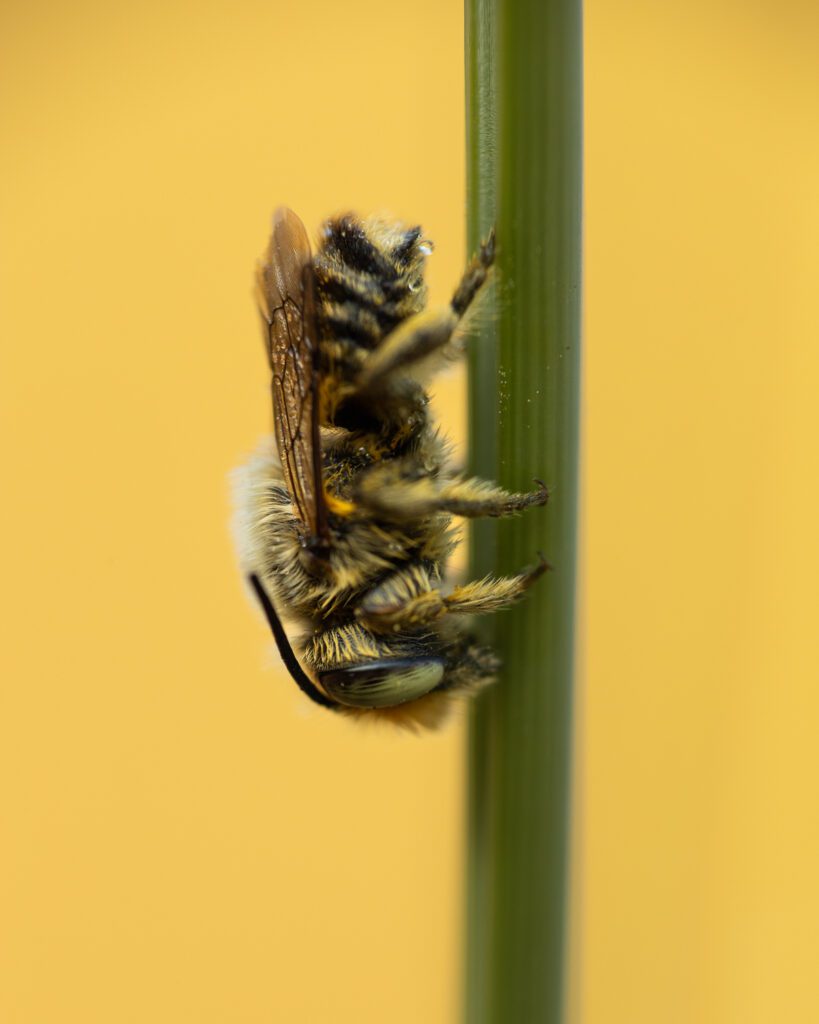
Canon EF 100mm F2.8L Macro at ISO 400, F5.6, 1/160th, handheld with natural light.
You will notice throughout this post that all of my photographs are captured in a single shot. One area I am proactively looking to improve is focus stacking. Focus stacking involves taking multiple images of a subject at different focal distances. The images are then combined in post-processing to produce a photograph with a much greater depth of field. Focus stacking is a technique I use widely within landscape photography. However, applying the method in a macro photography setting while handholding a camera is immensely difficult.
An Unexpected Encounter With an Apex Predator
After photographing the Green-Eyed Flower Bee, I continued to scout around the surrounding grasses for other interesting subjects. Not long after, I stopped in my tracks. There it was, the unmistakable outline of an iconic predator. Four large wings in two sets of two extended perfectly symmetrical from its body, delicately coated in dew. Its body was hunkered down, pulling it closer to the leaf it had taken refuge on. A subtle blend of greens, yellows, and browns helped it blend into its environment, which left me questioning how I even spotted it in the first place.
Can you guess what it was yet?
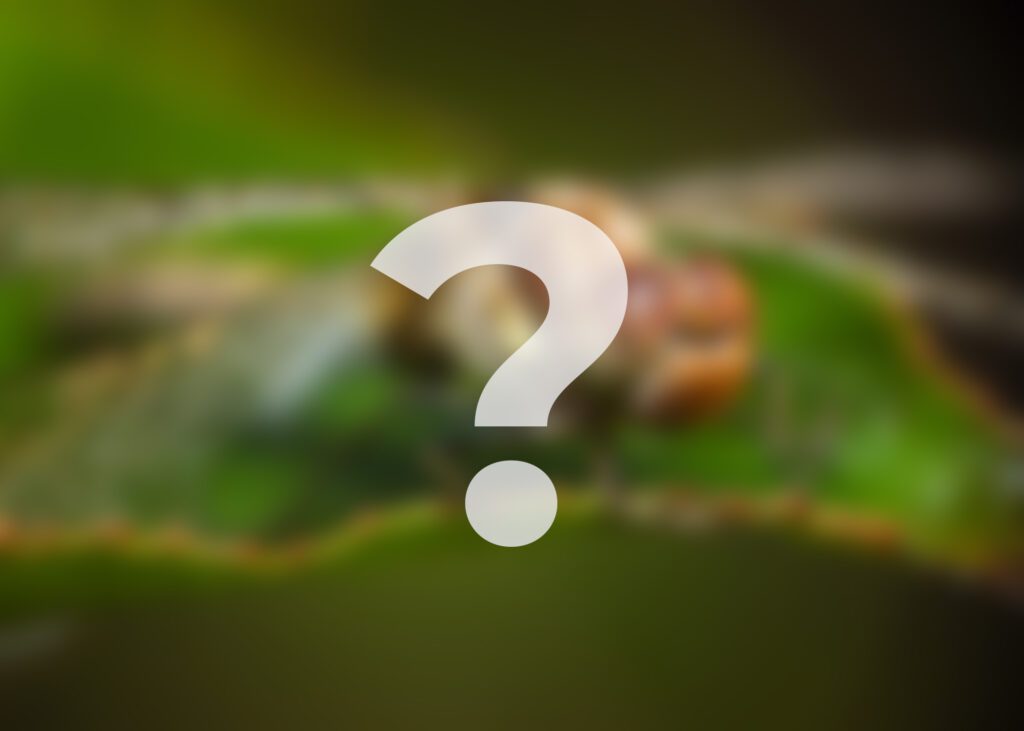
It was, of course, a dragonfly!
Common Darter Dragonfly
I love dragonflies; they are my favourite insects by far. They’re incredibly agile and are true apex predators of the insect world. However, as you might have guessed, they’re ridiculously hard to photograph. Unless, of course, you’re lucky enough to find one during the early morning. Dragonflies are cold-blooded and like to basque in sunlight during the early morning before warming up and taking to the skies. Should you find one during the early hours, they are infinitely more cooperative and easier to photograph.
With that said, it’s fair to say I was surprised when I came across a resting female Common Darter covered in dew. These amazing insects truly are masters of camouflage, and I didn’t expect to see one resting on the leaf of a small shrub amongst the dune grasses. In hindsight, this isn’t the best macro photograph I have ever captured. It would have been nice to focus stack and capture the extent of the dew that covered this stunning creature from ‘head to toe’. However, this is exactly why I’m working towards improving my macro photography skills.
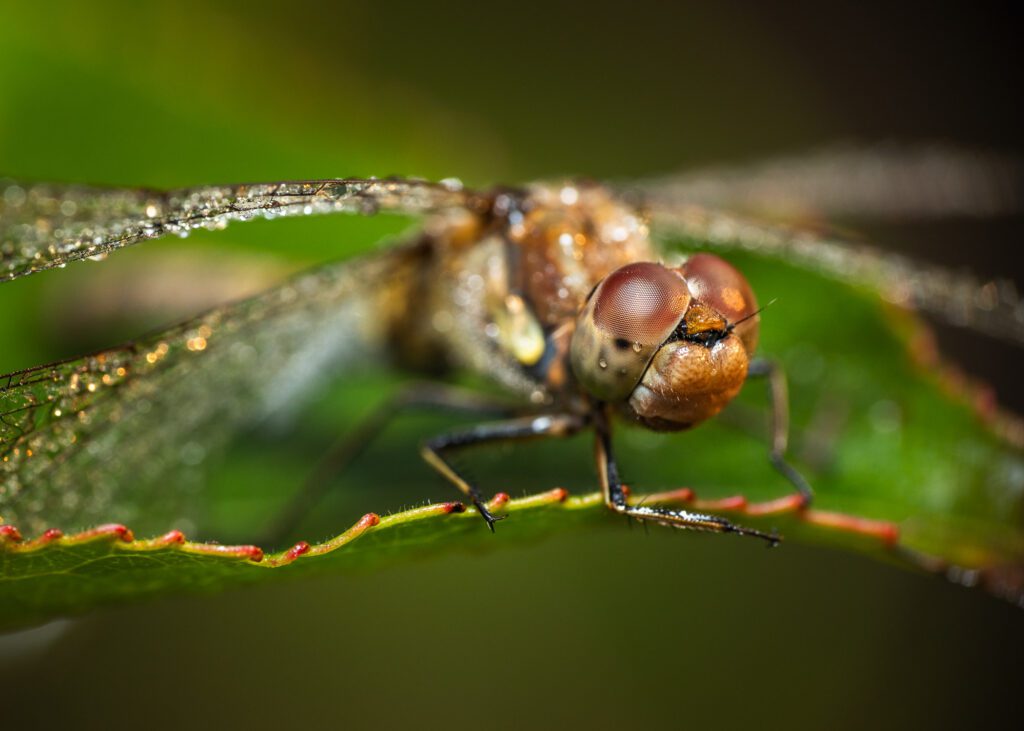
Canon EF 100mm F2.8L Macro + Raynox DCR-250 at ISO 400, F11, 1/100th handheld with diffused flash at 1/16th power.
Regardless of the outcome, I’m still thrilled to have had the opportunity to photograph this amazing insect. It was also my first time using diffused flash alongside the Raynox DCR-250. I typically avoid using flash as I prefer to work with natural light. However, on this occasion, there wasn’t enough natural light available to achieve a meaningful depth of field.
My Favourite Macro Photograph of the Year
Over the next few days, I saw an abundance of Common Darters. They were everywhere! I had so much fun photographing them and witnessing their unique behaviours. Whilst they’re resting, you have plenty of time to sit and watch them. It doesn’t take long to realise that they have incredible personalities. This display of personality is exactly what I managed to capture in my favourite macro photograph of the year.
Smile! The Beauty of Macro Photography
My favourite macro photograph of the year came from a wooden picnic bench of all places! It’s a photograph I look at and can’t help but smile, and that’s what it’s all about: capturing moments with meaning. Here’s how it came to fruition.
On my journey back to the car, I noticed a female Common Darter basking on a picnic table. Mindful that the sun was rising quickly by this point and she could take to the sky at any moment, I edged closer. I approached as slowly as possible, avoiding any sudden movements. After a nervy approach, I sat at the opposite end of the table and carefully rested my camera on the tabletop. With my Canon 100mm F2.8L macro lens attached, I inched a little bit closer, lined up a composition and waited for the perfect opportunity.
I waited and waited. I wasn’t entirely sure what I was waiting for, but I knew it would be obvious when I saw it. There it was. She opened her mouth and tilted her head ever so slightly, and I instinctively fired the shutter. The result was exactly what I was hoping to capture: a perfect display of personality and emotion. Take a look and tell me she doesn’t make crack a smile!
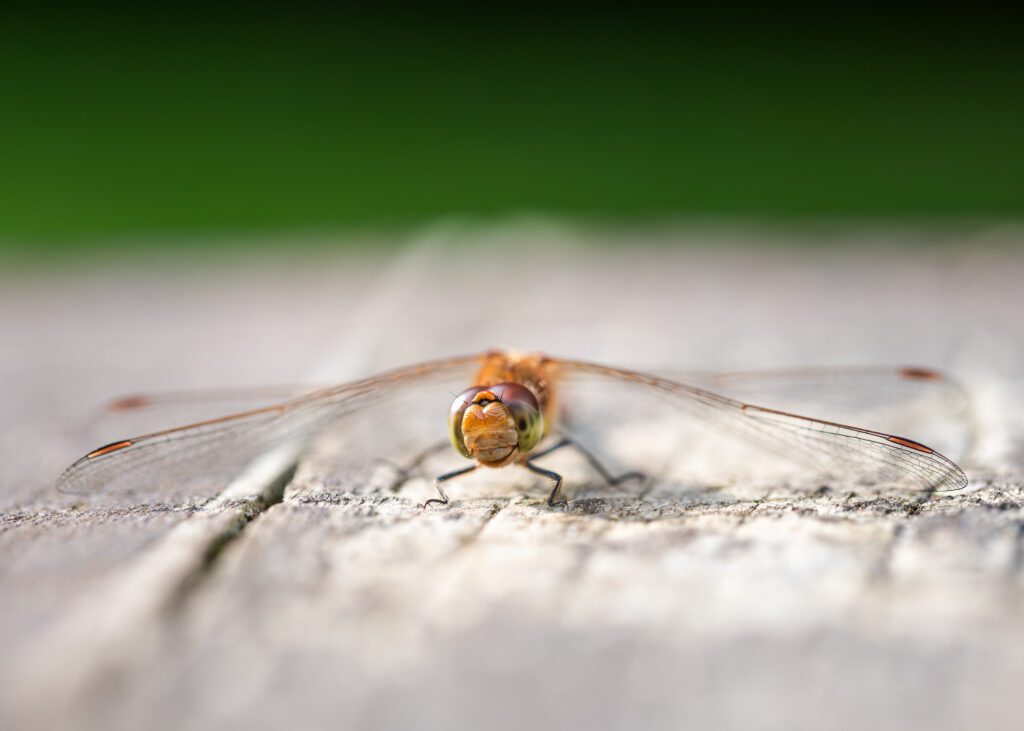
Canon EF 100mm F2.8L Macro at ISO 400, F4, 1/200th, natural light, and camera rested on the picnic tabletop.
Look at that smile on her face, beautiful! I opted to keep to 1:1 magnification for this shot and a relatively narrow depth of field to blur out the picnic table and background. I love the symmetrical stance in this photograph, the perfect position of the beautiful wings and the subtle leading lines of the wooden picnic table. Below is a cropped version emphasising the smile a little more at the expense of losing some of the wings on either side of the photograph.
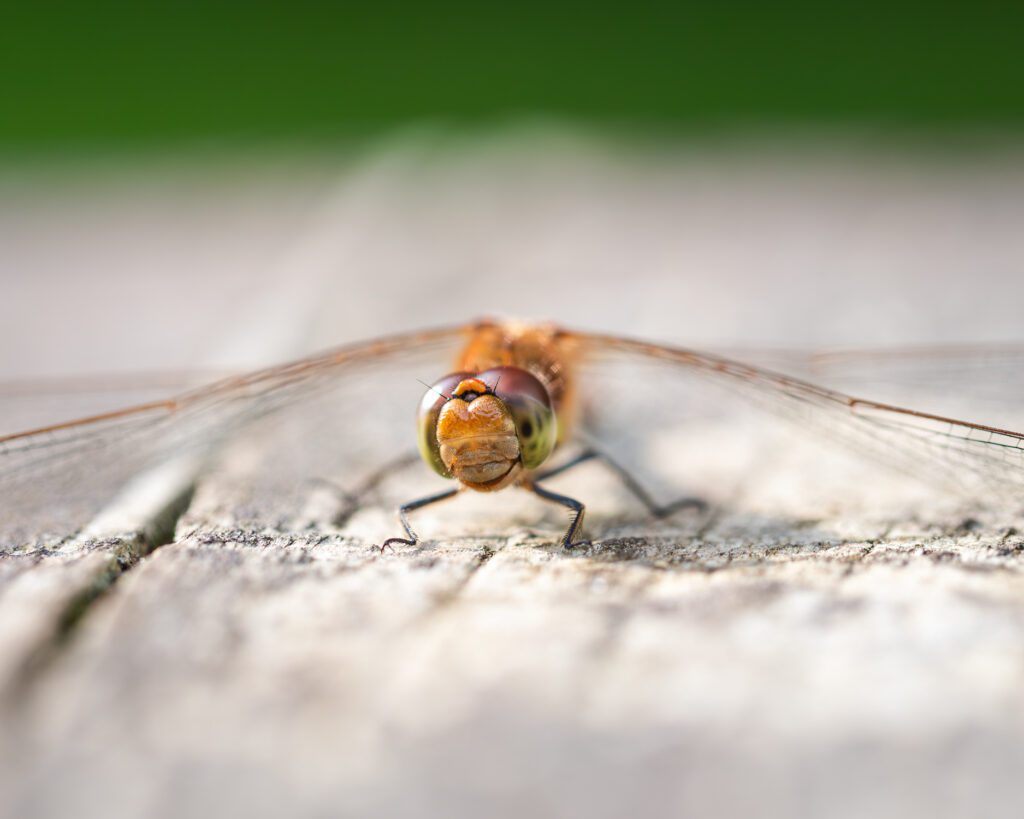
The End of Macro Photography Season
As I’m writing this post, the end of the macro photography season has pretty much drawn to a close. I managed to capture a wide range of photographs, but I’m mindful that I’ve waffled on a lot in this post already. With that said, I’ll add a carousel below with a selection of bonus images.
Moving Forward
I’ve learnt a lot this season, which I’m looking forward to building upon next season. My biggest goal is to master the art of focus stacking to produce significantly more detailed photographs. It would be incredible to be able to better illustrate beautiful moments in the macro world. Until then, it’s back to landscape photography, which means an exciting return to the mountains throughout autumn and winter. It looks set to be an exciting few months, and I can’t wait to share my experiences with you. As always, thanks a lot for reading if you made it this far and see you on the next adventure!

